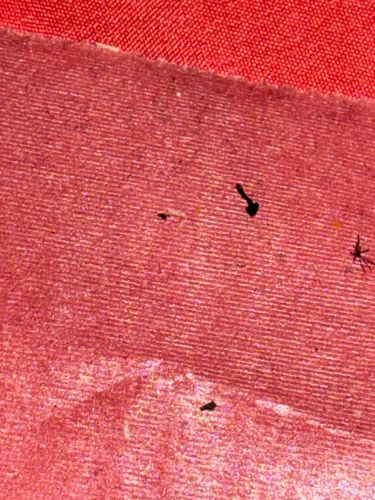Carpet Beetle (likely Black Carpet Beetle)
Scientific Name: Attagenus unicolor (for Black Carpet Beetle, a common species)
Order & Family: Order: Coleoptera, Family: Dermestidae
Size: Adults: 2-5 mm (approximately 1/8 to 3/16 inch) long. Larvae: up to 5 mm long (fuzzy or hairy, often with a 'tail' of bristles).

Natural Habitat
Indoors: closets, attics, storage areas, around baseboards, under furniture, in air ducts, behind wall voids, and anywhere natural fibers or animal products are stored. Outdoors: flower gardens, nests of birds and other animals, and areas with dead insects. They are commonly found in homes, museums, and warehouses.
Diet & Feeding
Larvae primarily feed on animal products and natural fibers, including wool, silk, fur, feathers, leather, pet food, dried meats, museum specimens (e.g., taxidermy, insect collections), and occasionally synthetic fibers when mixed with natural ones. Adults feed on pollen and nectar from outdoor plants.
Behavior Patterns
Larvae of carpet beetles are known for their destructive feeding habits on natural fibers. They undergo complete metamorphosis. Adults are typically found outdoors on flowers, feeding on pollen and nectar, and are good fliers. Indoors, adults may be seen near windows as they are attracted to light. The larval stage is often found in dark, undisturbed areas. Females lay eggs in suitable food sources, and larvae may take several months to a year to develop, depending on environmental conditions and food availability. They prefer dark, undisturbed areas.
Risks & Benefits
Risks: Carpet beetle larvae are significant pantry pests and fabric pests, causing damage to clothing, carpets, upholstery, and stored food products. They can cause considerable economic damage in homes, museums, and textile industries. There are no known health risks to humans from bites, but some people might experience skin irritation or allergic reactions due to contact with larval hairs or shed skins. Benefits: In natural ecosystems, some species of dermestids play a role as scavengers, breaking down organic matter like dead animals and insects.
Identified on: 8/30/2025